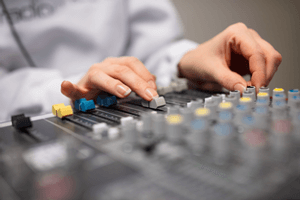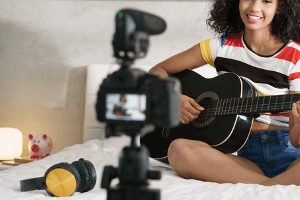Online Film School Free » Film Editing Course » Sound Design for Film Course » Recording Film Sound On Locations
The Complete Guide for Recording Film Sound On Locations
Table of Contents
Toggle
Since the work on the sound design can take a lot of time, you should invest in the sound recording stage properly. Don’t waste the time of your sound designer on eliminating noises from the scene instead of working on more creative stuff for the scene.
Script breakdown in a sound context
The first step in film sound recording is reading the script. While you read the script, write down all the sounds that you hear in your head. If you are starting to have any ideas for ambience sounds, write them down too.
Now:
Look at your list and decide what the sounds you’ll need to record on location and what are the sounds you can record later on by yourself. Make a “sound Table”. Tis is a table containing the following information: scene, shot, Take, Timecode and description. In the description box, write down your comments on the sound.
Checking the location
All production begins with locations scout. This scout is done usually with the cinematographer, director, producer, and soundmen. Sometimes the screenwriter and lighting technician comes along. As a soundman, you must insist on being on this scout. If it does not fit your schedule, you may want to reach locations a day before the shooting. On the location pay attention to background noises. Will you be able to overcome them? Is it at certain times? Clapp and shout. Do you notice some echo? It’s essential that if you hear something that might be a problem, you’ll insist on fixing it. Don’t let anyone tell you stuff like “Don’t worry; we will fix it in the post”- That’s never happening.
Microphones

- Microphones –The best way to record film sound is to use a few microphones so that each one will be on a different character. Your microphones must be of the same type and the right ones to any specific location.
- Hiding the microphones – Film sound is also the art of hiding the microphone. Whatever microphone you’ll choose, you should also think in advance where to hide it in the scene while taking into account that the farthest you’ll put the microphone from the character the more background noise will be recorded.
- What you’ll need to do is simple: first, to put the actors in place and clarify the boundaries of the frame now it’s possible to determine a suitable place hidden microphones. You should also note that the actor isn’t standing next to a significant noise source.
- The Boom Man – During the shooting, the boom man is holding the microphone with a long pole called a boom. The sound man sits behind the mixer that is connected to the microphone and make sure the sound volume stay the same and at the right level all the time. In low-budget productions, the sound man has to be also the boom man, and while he holds the pole (boom), he works on the sound mixer. That is not recommended.
How to record ambient sound for a film?
Do not leave the location without recording 30-120 seconds of room atmosphere sound. The purpose of the ambient sound recording is to help the video editor to cover sound errors in the editing room. That means that the whole team is entirely silent, and only the natural noise of the place is recorded. It is important to mention that ambient sound can be room tone but also crowed mumbling, traffic or any sound that I son the background of a scene.
Recording sounds (Foley)
The sounds in your film, that weren’t recorded in the set will be recorded by the sound designer and they are called Foley (after James foley who invented the technique). They are added later on to the film. These sounds need to sound realistic and interesting. Today the foley artist has a big part in making the cinematic experience a big one. The sound designer will show the film to the Foley guy (or girl) and explain it’s concept to him. The Foley guy should take his notes and translate them into sound recordings.
Single system or double system
This sound design for film course is trying not to be too technical, but this is something you need to know. When shooting on film, the sound can be recorded separately (double system)to a machine. It used to be only when filming with film, but nowadays we use it even for digital shooting. The major advance of the double system recording is that many good cameras don’t have the XLR connection you need to connect the mike. The single recording means recording directly into the camera.
You’ll need to decide which one will suit you best.



